
When contacting us by e-mail, correspondents are asked to include their name and full postal address and, when providing information, to quote exact book and magazine sources. The word ‘chess’ needs to appear in the subject-line or in the message itself.
| First column | << previous | Archives [34] | next >> | Current column |
Milan Ninchich (Macquarie, ACT, Australia) sends an extract from page 41 of Barbra The Way She Is by Christopher Andersen (London, 2006):

The Erasmus connection is well known, but where did the quotes about ‘Fisher’ come from?
The photograph below, from page 114 of the April 1959 Chess Review, shows Fischer at the time he was a student at Erasmus Hall:

What is the provenance of the familiar anecdote about a master who, in a lost pawn ending, scored a trick win by moving his remaining pawn backwards?
This passage comes from page 350 of Schach-Echo, 23 November 1961:

An account in English was published on page 59 of the March 1962 Chess Life:
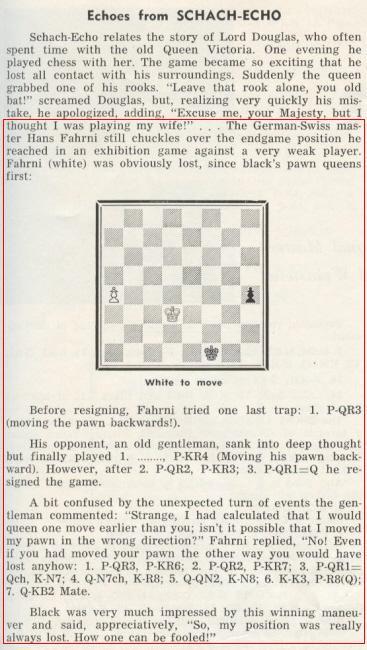
How much further back can the story be traced?
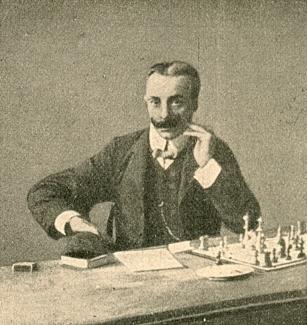
Hans Fahrni, from page 487 of the Barmen, 1905 tournament book
Gordon Gribble (Gettysburg, PA, USA) points out that two photographs of Kester Svendsen are available at the webpage of the University of British Columbia Library: (1), (2).
Awani Kumar (Kanpur, India) writes:
‘An old problem has been solved, as I have constructed a magic tour by the knight in an 8x8x8 cube. The sum of all the rows, columns and pillars is 2,052. The squares can be arranged in alphabetical order over one another to visualize the cube in three dimensions. The tour has been verified by Günter Stertenbrink and George Jelliss, who are renowned experts in this field.’
|
|
|
|
A
|
|
|
|
|
|
|
|
|
|
B
|
|
|
|
|
|
19
|
482
|
509
|
16
|
461
|
480
|
35
|
50
|
|
|
510
|
15
|
20
|
481
|
472
|
453
|
58
|
43
|
|
490
|
27
|
8
|
501
|
36
|
49
|
462
|
479
|
|
|
7
|
502
|
489
|
28
|
57
|
44
|
471
|
454
|
|
511
|
14
|
17
|
484
|
465
|
452
|
63
|
46
|
|
|
18
|
483
|
512
|
13
|
460
|
473
|
38
|
55
|
|
6
|
503
|
492
|
25
|
64
|
45
|
466
|
451
|
|
|
491
|
26
|
5
|
504
|
37
|
56
|
459
|
474
|
|
117
|
100
|
411
|
398
|
429
|
448
|
67
|
82
|
|
|
414
|
395
|
116
|
101
|
440
|
421
|
90
|
75
|
|
410
|
399
|
120
|
97
|
68
|
81
|
430
|
447
|
|
|
113
|
104
|
415
|
394
|
89
|
76
|
439
|
422
|
|
387
|
118
|
109
|
412
|
433
|
420
|
95
|
78
|
|
|
108
|
413
|
390
|
115
|
428
|
441
|
70
|
87
|
|
112
|
409
|
386
|
119
|
96
|
77
|
434
|
419
|
|
|
391
|
114
|
105
|
416
|
69
|
88
|
427
|
442
|
| C | D | ||||||||||||||||
| 495 | 30 | 1 | 500 | 33 | 52 | 463 | 478 | 2 | 499 | 496 | 29 | 60 | 41 | 470 | 455 | ||
| 22 | 487 | 508 | 9 | 464 | 477 | 34 | 51 | 507 | 10 | 21 | 488 | 469 | 456 | 59 | 42 | ||
| 3 | 498 | 493 | 32 | 61 | 48 | 467 | 450 | 494 | 31 | 4 | 497 | 40 | 53 | 458 | 475 | ||
| 506 | 11 | 24 | 485 | 468 | 449 | 62 | 47 | 23 | 486 | 505 | 12 | 457 | 476 | 39 | 54 | ||
| 99 | 406 | 397 | 124 | 65 | 84 | 431 | 446 | 396 | 125 | 102 | 403 | 92 | 73 | 438 | 423 | ||
| 400 | 121 | 98 | 407 | 432 | 445 | 66 | 83 | 103 | 402 | 393 | 128 | 437 | 424 | 91 | 74 | ||
| 405 | 388 | 123 | 110 | 93 | 80 | 435 | 418 | 126 | 107 | 404 | 389 | 72 | 85 | 426 | 443 | ||
| 122 | 111 | 408 | 385 | 436 | 417 | 94 | 79 | 401 | 392 | 127 | 106 | 425 | 444 | 71 | 86 |
| E | F | ||||||||||||||||
| 231 | 252 | 285 | 258 | 219 | 296 | 197 | 314 | 276 | 271 | 234 | 245 | 306 | 221 | 304 | 195 | ||
| 286 | 257 | 232 | 251 | 294 | 201 | 316 | 215 | 233 | 246 | 275 | 272 | 207 | 308 | 209 | 302 | ||
| 249 | 230 | 259 | 288 | 311 | 220 | 297 | 198 | 270 | 273 | 248 | 235 | 222 | 289 | 196 | 319 | ||
| 260 | 287 | 250 | 229 | 202 | 309 | 216 | 299 | 247 | 236 | 269 | 274 | 291 | 208 | 317 | 210 | ||
| 145 | 136 | 383 | 362 | 165 | 334 | 339 | 188 | 378 | 367 | 152 | 129 | 330 | 161 | 192 | 343 | ||
| 382 | 363 | 148 | 133 | 340 | 187 | 326 | 173 | 149 | 132 | 379 | 366 | 191 | 344 | 169 | 322 | ||
| 359 | 146 | 137 | 384 | 331 | 164 | 189 | 342 | 144 | 377 | 354 | 151 | 168 | 335 | 338 | 185 | ||
| 140 | 381 | 358 | 147 | 190 | 341 | 172 | 323 | 355 | 150 | 141 | 380 | 337 | 186 | 327 | 176 |
| G | H | ||||||||||||||||
| 253 | 226 | 263 | 284 | 295 | 204 | 313 | 214 | 266 | 277 | 244 | 239 | 206 | 305 | 212 | 303 | ||
| 264 | 283 | 254 | 225 | 218 | 293 | 200 | 315 | 243 | 240 | 265 | 278 | 307 | 224 | 301 | 194 | ||
| 227 | 256 | 281 | 262 | 203 | 312 | 213 | 298 | 280 | 267 | 238 | 241 | 290 | 205 | 320 | 211 | ||
| 282 | 261 | 228 | 255 | 310 | 217 | 300 | 199 | 237 | 242 | 279 | 268 | 223 | 292 | 193 | 318 | ||
| 135 | 370 | 361 | 160 | 179 | 348 | 325 | 174 | 368 | 153 | 130 | 375 | 352 | 183 | 170 | 321 | ||
| 364 | 157 | 134 | 371 | 166 | 333 | 180 | 347 | 131 | 374 | 365 | 156 | 329 | 162 | 351 | 184 | ||
| 369 | 360 | 159 | 138 | 349 | 182 | 171 | 324 | 154 | 143 | 376 | 353 | 178 | 345 | 328 | 175 | ||
| 158 | 139 | 372 | 357 | 332 | 163 | 350 | 181 | 373 | 356 | 155 | 142 | 167 | 336 | 177 | 346 |
‘If this is Golombek’s English, we will eat our hat. It is more like the English of a well-educated foreigner.’
Who wrote this, and about which book?
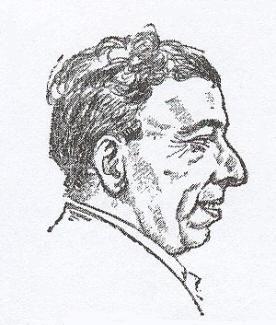
Harry Golombek, Schach-Express, 13 October 1949, page 11
The quote below, from an obituary of Sir Maurice Kendall, comes from Morgan Daniels (London):
‘Life at St John’s was in striking contrast to that in Derby, and Maurice’s naturally gregarious nature brought him several circles of friends apart from the group reading Mathematics at St John’s: he played cricket for his college (and indeed was still a useful medium-paced bowler 25 years later); and he might have got a half-blue at chess had the company been less select – C.H.O’D. Alexander, later twice British champion, was one, and Jacob Bronowski another. Typically, Maurice enjoyed playing chess blindfold, and Bronowski and he played “negative chess”, where the previous moves had to be deduced from a set position.’
Source: A. Stuart, ‘Sir Maurice Kendall, 1907-1983’ in the Journal of the Royal Statistical Society. Series A (General), Volume 147, Number 1 (1984), page 121.
Paul Timson (Whalley, England) notes that Bronowski represented Cambridge University on board three against Oxford University in 1931, losing to E.S. Bensinger. See, for instance, page 357 of A Century of British Chess by Philip W. Sergeant (London, 1934). In the report on pages 157-158 of the April 1931 BCM the encounter was described as follows:
‘The third-board game raised Oxford’s hopes, Bensinger gaining a meritorious victory over Bronowski, winning a rook after having, apparently at least, had a ticklish position when the short middlegame commenced.’
From page 277 of the June 1936 BCM:
‘The Yorkshire individual championship has been won by J. Bronowski, of Hull. ... Dr Bronowski is assistant lecturer in mathematics at the University College, Hull, and is also an M.A., Ph.D. of Cambridge. He is 28 years of age. He has lived in Poland, Germany, France and Spain, and had been in Hull for one year when he won the club championship, which he has now followed by winning the county championship as well.’
A game from the London Commercial League was given (with notes by Bronowski) on pages 119-120 of the April 1963 BCM:
Jacob Bronowski – E.W. Harrison1 Nf3 Nf6 2 c4 d6 3 b3 e5 4 Bb2 Bg4 5 h3 Bh5 6 g4 Bg6 7 Bg2 Nc6 8 Nc3 Be7 9 d3 Qd7 10 Qd2 O-O-O 11 Nd5 Nxd5 12 cxd5 Nb8 13 Qe3 a6 14 Rc1 Qb5 15 O-O f5 16 gxf5 Bxf5

17 Nxe5 dxe5 18 Qxe5 Qd7 19 Rxc7+ Qxc7 20 Rc1 Nc6 21 Qxf5+ Qd7 22 Qxd7+ Kxd7 23 dxc6+ bxc6 24 Rxc6 a5 25 Ra6 Rc8 26 Ra7+ Rc7 27 Rxc7+ Kxc7 28 Bd5 Rd8 29 e4 g6 30 f4 Rf8 31 Kg2 Kd7 32 Kg3 Bb4 33 Bg7 Rc8 34 Bc4 Bd2 35 d4 Bc3 36 e5 Ke8 37 d5 Rd8 38 Bf6 Rb8 39 d6 Resigns.
Below is a list of problems by Bronowski that we have noted in the BCM:
The first of these:
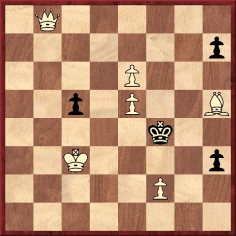
Mate in three.
Thomas Binder (Berlin) writes:
‘My chess club, the SF Siemensstadt in Berlin, is preparing for its 90th anniversary in 2009. Our predecessor, SK Werner Siemens, was founded in February 1919, immediately after the First World War, but we suspect that it was not a completely new club but a revival of a pre-War one. The first President in 1919 was Dr von Tietze.
Our club’s archives, as well as those of the Berlin Chess Federation, date back only to the 1930s, so we are seeking evidence of a Siemens Chess Club in Berlin before 1919 and information about the above-mentioned President.’
From Christian Sánchez (Rosario, Argentina):
‘In Especial Ocho x Ocho, September 1994 (page 15) Fernando Visier wrote: “En los análisis de partidas aplazadas llámase ‘sistema Lilienthal’ a buscar de antemano una continuación que asegure el empate, y a partir de ahí avanzar a cotas más ambiciosas.” (English translation: “In analysis of adjourned games, the ‘Lilienthal system’ consists of, firstly, searching for a way to achieve the draw and then seeking better prospects.”)
When was this method first attached to Lilienthal’s name?’

Andor Lilienthal
When did F. Sämisch begin playing the Sämisch Variation in the Nimzo-Indian Defence (1 d4 Nf6 2 c4 e6 3 Nc3 Bb4 4 a3) and did he ever write about his involvement with that opening?
On page 207 of the July 1965 BCM Bruce Hayden noted an early occurrence of 4 a3: G.M. Norman played it in the 1923-24 Hastings tournament (against R.P. Michell):
‘The idea caught the eye of the German master Fritz Sämisch and he adopted it thereon. And thereon, as is the way of chess fashion, his name was bestowed on the variation which was to play such a great part in master practice in the years to come ...’
Although usually dated ‘1923’ the Norman v Michell game was played on 3 January 1924 (page 43 of the February 1924 BCM). Michell, who won, annotated it on pages 77-78 of the same issue.
Michael McDowell (Westcliff-on-sea, England) notes that a few more problems by Bronowski can be found at the Chess Problem Database Server website by entering in the search box the following reference: a = 'bronowski'
Paul Buswell (Hastings, England) mentions that a Bronowski Trophy is still played for in London.
Avital Pilpel (Haifa, Israel) draws attention to the conclusion of the game between Itzchak Aloni (Israel) and Suren Momo (Mongolia) at the 1962 Olympiad in Varna:
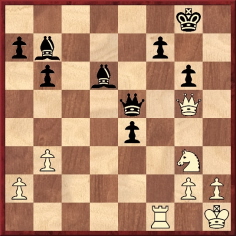
27 Nf5 Qxh2 mate.
We give some other examples of a snap mate on h2 by the queen:
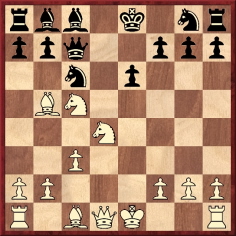
W. Steinitz v Voigt, Philadelphia, 1885
12 O-O Qxh2 mate. This may be regarded as the ultimate case of ‘castling into it’.
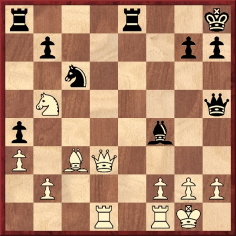
J. Berger v H. Süchting, Vienna, 1908
25 Qd5 Qxh2 mate.
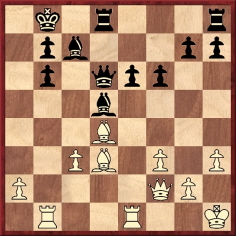
M. Euwe v S. Landau, ASC-NRSV match, 1933
27 Bxb6 Qh2 mate.
For further details regarding these games, including sources, see pages 312-313 of A Chess Omnibus.
The remark quoted in C.N. 4970 (‘If this is Golombek’s English, we will eat our hat. It is more like the English of a well-educated foreigner.’) appeared on page 340 of CHESS, 15 July 1964 in a brief review of a book translated and edited by Golombek, Grandmaster of Chess The Early Games of Paul Keres (London, 1964).
We recall too Wolfgang Heidenfeld’s review of World Chess Championship 1957 by H. Golombek (London, 1957) on pages 60-61 of the March 1958 BCM. Whilst praising aspects of the book, Heidenfeld quoted a passage describing the start of the third match-game, where ...
‘... the author uses over 40 words to say exactly nothing. One is almost surprised that he does not record the fact that both players were breathing (you know, by inhaling air). Could any of the stuff he sees fit to describe be of the slightest interest to any chessplayer anywhere in the world?’
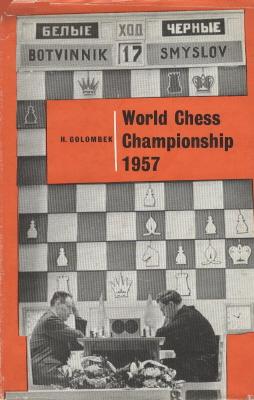
Heidenfeld stated that there was ‘far too much of this meaningless verbosity throughout the book’ and he also raised an analytical point that is worth noting. Having remarked that the analysis was sometimes ‘very good’, Heidenfeld added that the annotations were ‘quite often extremely superficial’. As an example he referred to page 104 (the 17th match-game):
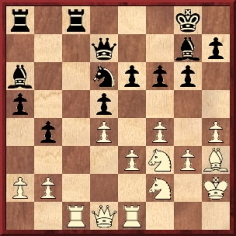
White (Botvinnik) played 24 Rxc8+, and Golombek wrote:
‘In this phase of the game Botvinnik is scarcely recognizable. Now he meekly surrenders command of the QB-file without gaining the slightest compensation elsewhere. At least he should try for a K-side attack by 24 P-Kt4.’
Heidenfeld commented:
‘The annotator overlooks that the 24th move is virtually forced; that, in other words, Botvinnik is compelled to surrender the queen’s bishop’s file, meekly or otherwise, with or without compensation. For if he plays 24 P-Kt4 as recommended, there follows 24...RxR 25 QxR N-K5! – and with the queen deflected from Q3 and no piece able satisfactorily to protect the knight, White could hardly avoid 26 KtxKt PxKt 27 Kt-Q2 R-QB1 28 Q-Q1 B-Q6 29 B-B1 Q-Kt4, with a completely won position, which would not even offer White the chances he still obtained in the game.
It is absurd to imagine Golombek should not have seen this simple sequence of moves. Unfortunately, in this book, quite unlike his usual self, he seems to be too anxious to comment for the sake of commenting, which is precisely the attitude of mind that produces such superficialities.’
In a letter published on page 105 of the April 1958 BCM P.H. Clarke commented on the position after the 29th move in Heidenfeld’s line:

‘... unfortunately the South African master has not seen that after 29...Q-Kt4? ... White has a simple and obvious reply in 30 KtxP. Had he himself given the position more than a superficial study he might have noticed that 29...R-B7 (or even 29...Q-Q4) was the correct way to continue.’
On page 137 of the May 1958 BCM Heidenfeld acknowledged that he had been careless but stated that his error had not invalidated his criticism: ‘whether the line suggested ends in Q-Kt4? or R-B7! has no bearing on the fact that the original note in Golombek’s book – and unfortunately not this note alone – is carping and unnecessary criticism.’
We see that Smyslov’s own note to move 24 suggests that Rxc8+ was necessary and makes no mention of Golombek’s 24 g4:
‘White concedes the open file, since if 24 Bf1 there could have followed 24...Rxc1 25 Qxc1 Rc8.’
Source: page 296 of Smyslov’s Best Games Volume 1: 1935-1957 by V. Smyslov (Olomouc, 2003).
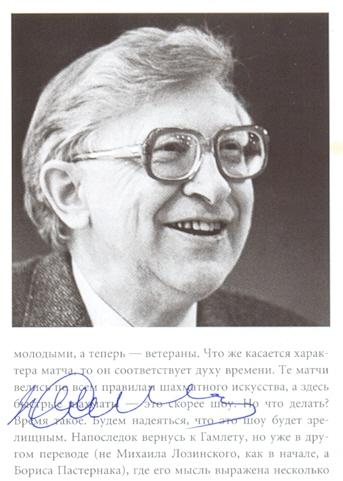
Vassily Smyslov

Kenneth Turner (Southaven, MS, USA) reverts to a question raised, but not answered, in our feature article The Chess Seesaw: the origins of the term ‘windmill’.
Readers’ contributions regarding early sightings of the word will be appreciated. We have yet to find it (or ‘seesaw’, for that matter) in any contemporary publication in connection with the most famous example (Torre v Lasker, Moscow, 1925), and at present it is even unclear to us in which decade ‘windmill’ entered the mazy little world of chess parlance.
A brief feature headed ‘Burgin backs chess’ appeared on page 100 of CHESS, April 1942:
‘Asked, in the course of a Brains Trust session, whether chessplaying could be regarded as useful recreation, e.g. among the Forces, Mr Burgin, the eminent Parliamentarian, said: “It certainly requires concentration and intellect, and the habit of defending your main posts is one of which some of our war leaders might certainly take account.’
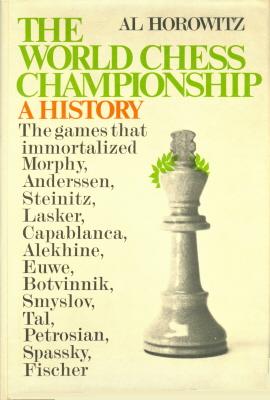
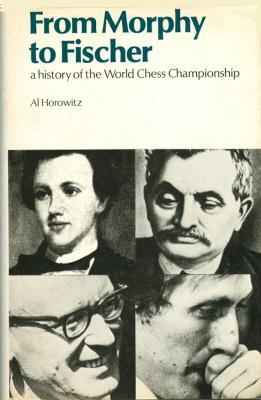
In C.N. 488 a correspondent asked whether the book The World Chess Championship A History by Al Horowitz (New York, 1973) was ghosted, and the matter remains unresolved.
Horowitz died on 18 January 1973, and it seems that the book, published by Macmillan, appeared that summer (see, for instance, page 452 of the August 1973 Chess Life & Review). In the United Kingdom, B.T. Batsford Ltd. brought it out the same year under the title From Morphy to Fischer, and in a review on pages 158-159 of the May 1974 BCM W.H. Cozens remarked:
‘The one serious typographical blemish is the irregularity of impression – the sporadic occurrence of pale patches which make some pages look like proof sheets.’
Cozens did not mention that the pale patches resulted from textual corrections in the Batsford edition. For example, on page 18 ‘John Blackburne’ was corrected to ‘Joseph Blackburne’ and on page 24 ‘Harry Bird’ became ‘Henry Bird’. On the other hand, ‘E.G.’ (instead of P.W.) Sergeant and ‘Samuel’ (rather than Leopold) Hoffer appeared in both editions (see pages 6 and 39 respectively).Whether those factual errors are evidence that Horowitz was, or was not, the author is debatable, but W.H. Cozens was certainly right to observe about the volume, ‘This is not the rumbustious Horowitz of such books as “How to win in the Chess Openings”.’
C.N. 4974 asked whether F. Sämisch ever wrote about his involvement in the opening 1 d4 Nf6 2 c4 e6 3 Nc3 Bb4 4 a3. Peter Anderberg (Harmstorf, Germany) shows that Sämisch explicitly rejected the notion that 4 a3 was his invention:
‘After the death, on 10 January 1934, of the Silesian master Adolf Kramer, F. Sämisch wrote as follows in his chess column in Berliner illustrierte Nachtausgabe of 23 February 1934:
“Zur Erinnerung an A. Kramer
Die vorliegende Partie ist die Prioritätspartie der bekannten Variante 1 d4 Sf6 2 c4 e6 3 Sc3 Lb4 4 a3!?, die fälschlich als meine Erfindung ausgegeben wurde [our emphasis]. Die erstmalige Anwendung dieser Spielweise geschah aber durch A. Kramer, nur ist diese Partie vergessen worden, weil sie in einem Provinzturnier gespielt wurde.Adolf Kramer – Gottlieb Machate
Gespielt im schlesischen Meisterturnier zu Bad Altheide, 1926. 1 d4 Sf6 2 c4 e6 3 Sc3 Lb4 4 a3 (Die Anhänger dieses Zuges haben gute Erfolge zu verzeichnen, obwohl er objektiv betrachtet minderwertig ist.) 4...Lxc3+ 5 bxc3 d6 (Am besten geschieht entweder d5! nebst c5!, wie Kmoch empfiehlt, oder b6 und auf 6.f3 d5!, wie Eliskases in Hastings gegen Dr. Alechin spielte.) 6 f3 O-O 7 e4 e5 8 Lg5 Te8 9 Ld3 Sbd7 10 Se2 Sf8 11 Dd2 Se6 (Auch bei anderen Zügen steht Schwarz nicht gut, da er keine Gegenchancen besitzt und dem drohenden Königsangriff nicht ausweichen kann.) 12 Le3 Sf8 13 O-O Sg6 14 Sg3 Kh8 15 Tab1 De7 (Um einer neuerlichen Fesselung zu entgehen, wäre besser 15...Sd7 geschehen.) 16 Lg5! h6
17 Sf5! Df8 (17...Lxf5 18 exf5 ist noch schlechter für Schwarz.) 18 Sxh6 Sh5 (Bessere Chancen bot 18...Sh7 nebst Sxg5 und Sf4.) 19 Sf5 f6 20 Le3 b6 21 g3 Df7 22 Dg2 Sf8 23 Dh3 Sh7 24 g4 Sf4 25 Lxf4 exf4 26 Sh4 Kg8 (Besser geschah sogleich 26...g5 .) 27 Sg2 g5 28 Dh6 Dg7 29 Dxg7+ Kxg7 30 Kf2 La6 31 h4 Th8 32 Th1 c5 33 hxg5 Sxg5 (Auf 33...fxg5 gewinnt 34 Th5 nebst Tbh1 mit der Drohung e5.) 34 Sxf4 Der Sieg von Weiß ist nun keine Frage mehr. Es folgte noch:) 34...Tac8 35 Sh5+ Kf7 36 f4 Se6 37 d5 Sd8 38 Sg3 Sb7 39 Sf5 Tcd8 40 Th6 Txh6 41 Sxh6+ Kg6 42 e5+! Kg7 (42...Kxh6 scheitert an 43 exf6 nebst Th1 matt.) 43 Sf5+ (und Schwarz gab auf. Eine von Kramer ganz hervorragend gespielte Partie!)”
Sämisch won the Bad Altheide tournament as an unofficial competitor. Obviously, he did not know the game Norman v Michell as he wrote that Kramer v Machate was the stem game. It had previously been published in Breslauer Neueste Nachrichten (28 October 1926) and on pages 11-12 of A. Babel’s book, Der Schachkongreß in Bad Altheide (Breslau, 1927), but not in either Deutsche Schachzeitung or Deutsche Schachblätter.
Chessbase’s MegaBase 2007 has a game Ferrari-Stalda (“Trieste-chB 1923”) with 4 a3, played some months before Norman v Michell.’

Emanuel Lasker
Between 4 March and 28 May 1895 Emanuel Lasker gave a dozen or so lectures at 8 King William Street, London EC, the entrance fee being one guinea. Source: the 1895 BCM, March (page 123), April (page 169), May (page 226) and July (page 298). Early the following year the texts were published by Bellairs & Co., London, under the title Common Sense in Chess. A ‘corrected’ version was brought out in 1917 by David A. Mitchell; it was reissued by Dover Publications, Inc. in 1965.
The book has received high praise. See, for instance, the observations of Harry Golombek on page 33 of Chess Treasury of the Air by T. Tiller (Harmondsworth, 1966), page 182 of A History of Chess (London, 1976) and page 355 of The Encyclopedia of Chess (London, 1977). In the second of those books Golombek commented:
‘One remark alone, on pawns, contains so much wisdom in so little space that it must be regarded as possibly the wisest remark ever made about what is after all the life-blood of the game: “A pawn move without a clearly defined purpose is to be blamed.”’
There has, though, been a dissenting voice regarding Lasker’s book. Pages 141-146 of The Gambit, May 1930 carried an heretical article ‘How Emanuel Lasker refutes his own unsound chess principles by wholesale violations’ by Solomon Hecht. It was reproduced under the title ‘Telling Off the World Champion’ on pages 56-66 of The Fireside Book of Chess by Irving Chernev and Fred Reinfeld (New York, 1949), and Reinfeld was apparently impressed. On pages 138-139 of The Human Side of Chess (New York, 1952) he wrote:
‘Another paradox: Lasker, who had the most sensitive feeling for the impalpable, the imponderable in chess, wrote a book in his youth called Common Sense in Chess. Whether it was a potboiler or a seriously intended work I do not know; but it had a considerable success because it purported to reduce good chess to a small number of common-sense principles. Many years later Solomon Hecht, an ordinary amateur, observed justly that “it is nothing short of astounding that a world[’s] champion a century after [the death of] Philidor should thus presume to crowd this game of infinite resources into the space of a peanut shell”. I agree: it is nothing short of astounding.’
In contrast, Reinfeld wrote admiringly of Common Sense in Chess in his Introduction to the revised edition which he brought out in 1946.
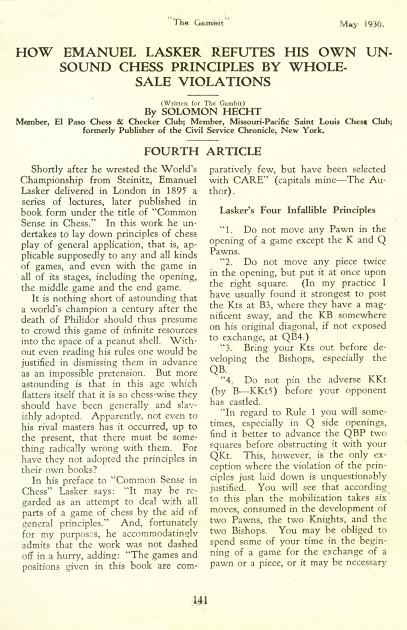
As shown above, the heading to Hecht’s article described him as follows: ‘Member, El Paso Chess & Checker Club; Member, Missouri-Pacific Saint Louis Chess Club; formerly Publisher of the Civil Service Chronicle, New York.’ Other information about him is slender. On page 3 of A Catalog of U.S.A. Chess Personalia (Worcester, 1980) Jeremy Gaige wrote:
‘Then there is the case of the American Chess Bulletin reporting the death in 1927 of Solomon Hecht and that he was buried in Woodlawn Cemetery. The only problem is that a check with the cemetery revealed that it was not Solomon but a Simon Hecht who was then interred, i.e. the American Chess Bulletin buried the wrong person.’
In Chess Personalia A Biobibliography (Jefferson, 1987) the entry for Hecht stated that he died in New York circa 1932, and it is therefore surprising that the privately circulated 1994 edition of the book reverted to circa January 1927 for his death. That edition also added that he was born in New York in January 1870, the source being the 1900 US census.
Hecht wrote many other articles for The Gambit, and some of them will be referred to in a future item.
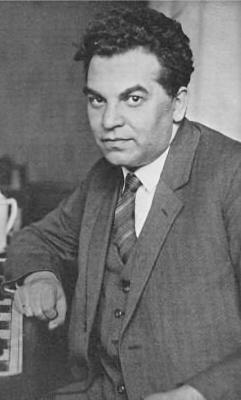

Richard Réti and Savielly Tartakower
David Lovejoy (Mullumbimby, NSW, Australia) mentions a claim by Tartakower that Réti tricked him out of an engagement for a simultaneous display in South America, as reported by Harry Golombek (in 14 lines) on pages 67-68 of Chess Treasury of the Air by T. Tiller (Harmondsworth, 1966). Our correspondent asks when exactly Tartakower and Réti were both in South America.
The following article by G.H. Diggle (‘The Badmaster’) is reproduced from page 42 of volume two of his book Chess Characters (Geneva, 1987). It originally appeared in the July 1986 issue of Newsflash.
‘The BM observes from current chess literature that FIDE Election fever has become indissolubly linked with the much criticized abortion of the great Championship Match in 1985, at the interesting point where the challenger, after a long period of barren chess, suddenly produced two exciting twins and would infallibly (so say his supporters) have astonished the World with a further set of triplets had he been allowed to go on. The BM can think of no chess controversy about which so much has been written, with the sole exception of the Staunton-Morphy affair. It is strange that the trouble in 1858 arose from public impatience about a match that wouldn’t start, while in 1985 it was a match that wouldn’t stop. Yet there are striking resemblances between the two rumpuses. In both cases the real kernel of the “story” (which the Press sensed at once) was the same – a young and gallant challenger being done out of his well-deserved triumph by the manoeuvres of aggravating autocrats. In both cases the affair, at its hide tide, assumed almost “Popish Plot” dimensions, and even experienced journalists for a short space believed almost anything, and involved themselves later in contradictions and dilemmas. And in both cases, every move or utterance by the principal actors went under the microscope and through the mangle. Did the President, faced with criticism whatever he did, bravely do what he thought was for the best, or had he been swayed by sinister voices from “behind the arras”? Did Staunton struggle against odds to find time to play, being finally forced to let Morphy down rather than his publishers? Or did he delay until he saw how the American shaped, taking fright at what he did see and not only backing out but telling the young man he had kept waiting so long that he had more important things to do?
“I doubt”, writes Dr John Nunn in Chess Notes, “whether the full truth will ever be revealed.” He was referring of course to the events of 1985 only, but the same could still be said of those which took place 127 years earlier. For even David Lawson’s splendid book seems to miss one point. When Morphy wrote his courteous and friendly letter to Staunton gently prodding him to fix a date, “Staunton”, Lawson writes, “left London for Birmingham without deigning to reply.” This rather gives the impression of evasion. But in fact, 21 August (the date of Morphy’s letter) was a Saturday, and Staunton was due to travel to Birmingham on Monday 23 August. So with no Sunday delivery, the letter would reach Staunton only on the very day of his departure. Meanwhile, on the intervening Sunday (22 August) Staunton must have read (to his acute annoyance) a veiled attack on him in Bell’s Life (a Sunday paper) by his old enemy George Walker: “Unless the day and hour for beginning the match are fixed, the whole is smoke, and the Chess Circle must draw its own conclusions. Morphy cannot afford to wait for an anniversary until the Days of Grace 1860.” Inflamed by Morphy’s letter arriving immediately on top of this, Staunton dashed off that disastrous paragraph (Illustrated London News, 28 August) alleging Morphy’s lack of seconds and stakes. It is almost certain that he wrote and despatched it before catching his train, for at Birmingham he was actually engaged in the Tournament on 24th and 25th (when he was knocked out by Löwenthal), and 26th would have been too late to go to press. And so rash words take five minutes to write and centuries to be forgotten.’
The five photographs below are reproduced from the American
Chess Bulletin of 1924:
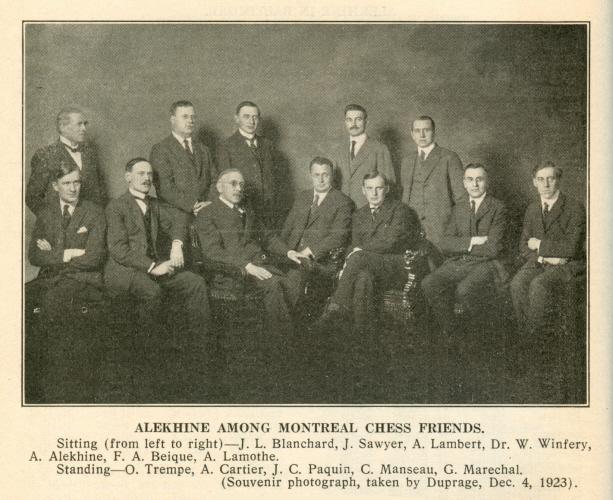
January 1924 Bulletin, page 6
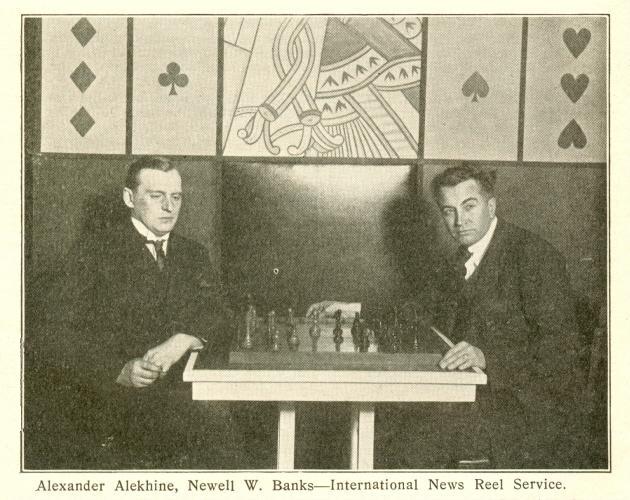
February 1924, page 28
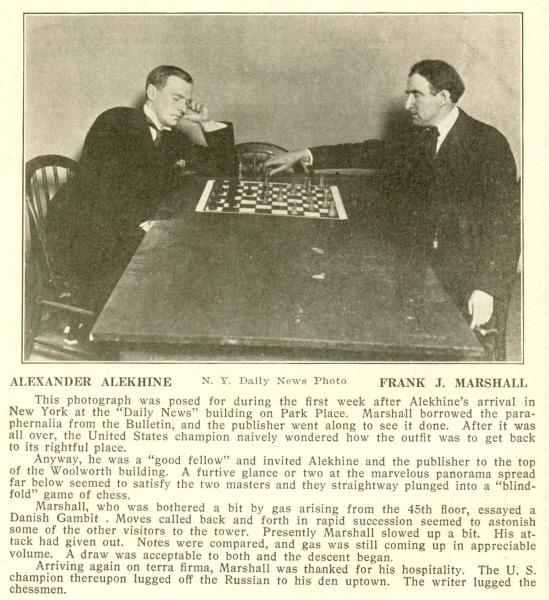
February 1924, page 30
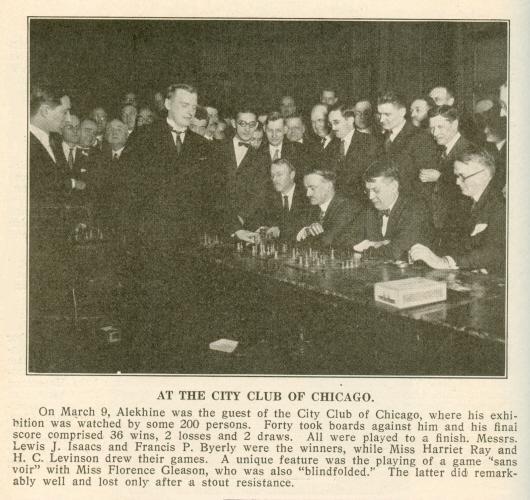
March 1924, page 56
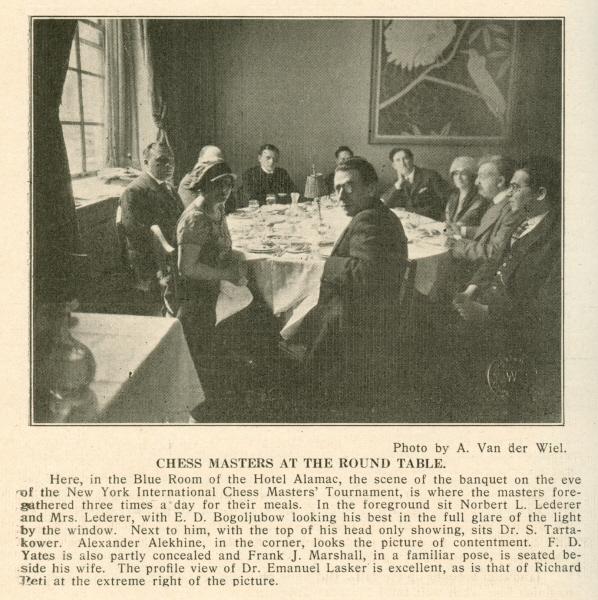
May-June 1924, page 106
This game was published on page 219 of the December 1924 American Chess Bulletin:
William Allen Ruth – Newell Williams Banks
Western Tournament, Detroit, 1924
English Opening
(Notes by Carlos Torre)
1 c4 Nf6 2 Nc3 e5 3 g3 d6 4 Bg2 Be7 5 e3 Nc6 6 d4 exd4 7 exd4 O-O 8 Nge2 Bf5 9 O-O Qd7 10 b3 Rae8 11 Nf4 Bd8 12 Bb2 g5 (‘Of course this is too bold. Black has reached a point where he cannot conceive any plan of action. The manner in which White takes advantage is highly artistic.’) 13 Nfd5 Bh3 14 Qf3 Bxg2 15 Nxf6+ Bxf6 16 Qxf6 Re6 17 Nd5 Bxf1 18 Qxg5+ Kh8 19 Nf6 Qd8

20 d5 Ne5 21 dxe6 Nf3+ (‘Of course if 21...fxe6 22 Kxf1 and f4.’) 22 Kxf1 Nxg5 23 e7 (‘But first 23 Nd5+ would have won without much difficulty.’) 23...Qxe7 24 Nd5+ Qe5 25 Bxe5+ dxe5 26 Nxc7 Nf3 27 Kg2 (‘27 Rd1 was very promising, for if 27... Nd4 then 28 Nb5.’) 27...Nd4 28 Re1 f6 29 Nd5 (‘29 f4, at once, was also possible.’) 29...Kg7 30 Re4 b5 31 f4 bxc4 32 fxe5 fxe5 33 bxc4 Nc6 34 Rg4+ Kf7 35 Rh4 Kg6 36 Rg4+ Kf7 37 Re4 Rb8 38 Re2 Rb1 39 Rf2+ Kg7 40 Kf3 Rc1 41 Ne3 Kf6 42 Ke4+ Ke6 43 Rf5 Ra1 44 Rh5 Kd6 45 Nd5 Kc5 (‘Not 45...Rxa2 at once, for then 46 Rh6+ and 47 Rxc6+. Black is making the most of it.’) 46 Rh6 (‘In the hope of catching Black, he again wastes valuable time. 46 Rxh7 at once and g4 should have been played.’) 46...a5 47 Ne3 Rxa2 48 Rxh7 a4 49 g4 a3 50 Rh8 Re2 51 Ra8 a2
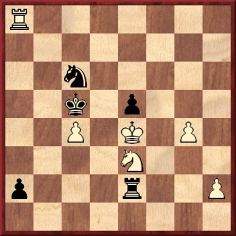
52 g5 Kb4 53 g6 Na5 54 g7 a1(Q) 55 g8(Q) Qd4+ 56 Kf5 Rxe3 57 Qb8+ Kxc4 (‘White has, of course, mismanaged the endgame sadly. Now Black good-naturedly takes the pawn. 57...Kc3 would probably have won. Let us say, 58 Rxa5 Rf3+ 59 Ke6 Qg4+, winning easily.’) 58 Qc7+ Drawn. (‘For if 58...Kd3 59 Rd8. Or 58...Kb3 59 Rb8+. A very interesting and instructive game.’)
Who is this chess writer?
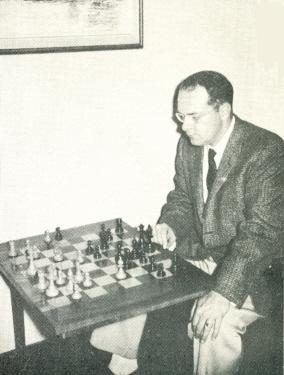
Owen Hindle (Cromer, England) notes that on page 46 of Chess Results, 1747-1900 by Gino Di Felice (Jefferson, 2004) a participant in Paris, 1867 was identified as ‘Mingrelia of Dadian, Andrey’.
The player was, in fact, Baron d’André, about whom we should like to know more. Page lxii of the Paris, 1867 tournament book merely stated that he was born in Paris, while page 149 of La Stratégie, 15 July 1867 had a brief onlooker’s report from the tournament, by ‘Ernest Nivernais’ (the pseudonym of G. Demommerot):
‘Tout à l’extrémité de la salle, MM. le baron d’André et Rousseau sont aux prises. Le premier est le type achevé du gentilhomme français, toujours prêt à dire, comme à Fontenoy: Tirez les premiers, Messieurs les Anglais. La France compte peu de joueurs de sa force.’
Mr Hindle recalls that a small picture of Baron d’André appeared in the e4 square of Samuel Loyd’s ‘photographic chessboard’ presented in C.N. 3590.
From page 34 of CHESS, December 1941:
‘Maurice Leblanc, author of the famous series of novels about Arsène Lupin, the gentleman crook character, has just died in Perpignan, aged 75. He used to work, in all kinds of weather, in a small open shed in the grounds of his house. At 5 p.m. each day he used to retire to his bedroom, draw the curtains and sit for hours in complete darkness planning his next day’s work. He believed that his fondness for chess helped him to work out his plots.’
Wanted: documentation about Maurice Leblanc’s interest in chess.
No progress has yet been made with the matters raised in C.N. 4648, and here we add three questions: did Spielmann predict before the Buenos Aires match that Alekhine would not win a single game, did Vidmar declare that Alekhine had not the ghost of a chance, and did Bogoljubow state that Capablanca would win 6-3? Below is V. Soultanbéieff’s account of such supposed predictions, on page 15 of his book Le match Capablanca-Alekhine (Brussels, 1929):
‘La plupart des maîtres, également, prévoyait la victoire de Capablanca; citons Spielmann qui déclarait qu’Alekhine ne gagnerait pas une partie; Vidmar qu’Alekhine n’a pas l’ombre d’une chance; Bogoljubow que le score final marquerait 6-3 en faveur de Capablanca ...’
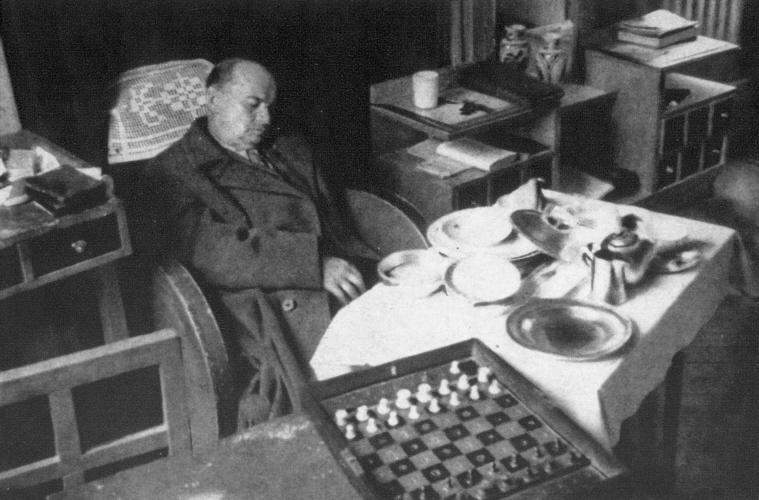
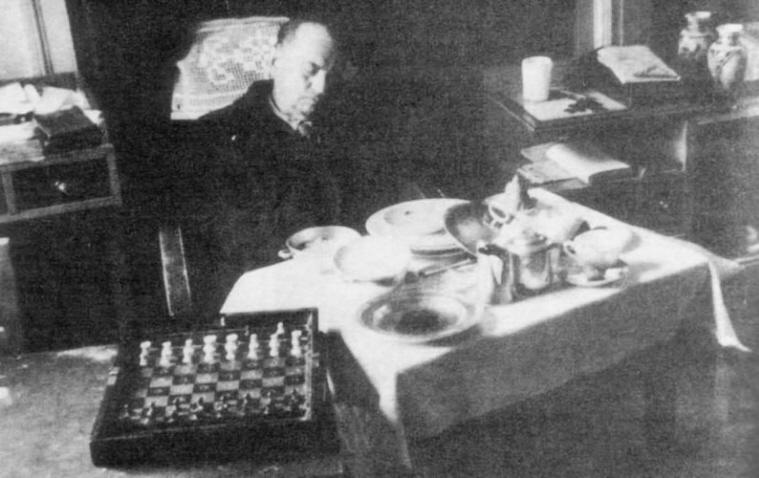
First, C.N. 3087 (see page 273 of Chess Facts and Fables) is reproduced:
‘According to the reports related on pages 70 and 84 of Xeque-Mate no Estoril by Dagoberto L. Markl and emanating from the Portuguese newspaper O Século of 25 March 1946, a poetry book, Vers l’Exile, was found next to Alekhine’s body, open at a passage which read (in our translation from the two slightly different Portuguese versions given), “This is the destiny of (all) those who live in exile”. Xeque-Mate no Estoril gives two spellings of the poet’s name, i.e. “Margareth Sotbern” and “Margaret Sothburn”. See also page 35 of Müller and Pawelczak’s monograph on Alekhine.
We have been unable to identify the poem or the poet.’

Progress can now be reported, as we have found that the writer was Margaret Sothern. The forename is sometimes spelt Margareth. Her book Vers l’Exil was translated by Juliette Bertrand and published by A. Michel, Paris in 1939. That information comes from the catalogue of the Bibliothèque nationale de France, which states that the 383-page work was a novel. Margaret Sothern had books published in English which were also described as translations (without specification of the original language). We have yet to see any of them, but the Catholicism in her output, as mentioned in catalogues, may be relevant to C.N. 3116 (see page 273 of Chess Facts and Fables), which quoted a report on Alekhine’s intended conversion to Catholicism shortly before his death.
Pending further investigations into Margaret Sothern, it will be noted that all the particulars in the reports emanating from O Século were incorrect (i.e. her name, the title of the book and the genre). We wonder whether its misclassification as a work of poetry arose because vers in French means not only ‘towards’ but also ‘verse’ (verso in Portuguese).
A group photograph from page 173 of the December 1925 American Chess Bulletin:


This is Jack Spence (1926-1978). The photograph appeared on the dust-jacket of A Selection of the Best Games of Vassily Smyslov World Chess Champion by A. Liepnieks and J.L. Spence (Lincoln, 1958).
Concerning the alleged tournament game which ended with 3 Qh5 mate, John Timm (New York) draws attention to a report on the US Open Championship in Omaha, 1959 which includes participants named Mayfield and Trinks. Since we lack the two sources indicated in the report (Chess Life, 1959 and a book in the ‘American Tournament Series’ by Jack Spence) it will be appreciated if a reader can inform us whether they shed light on the three-move game.
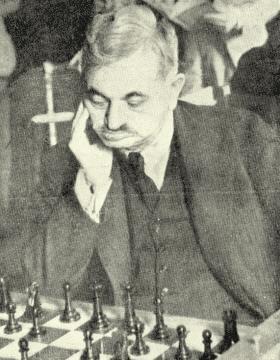
Emanuel Lasker
Emanuel Lasker Biographie eines Schachweltmeisters by J. Hannak (Berlin-Frohnau, 1952) featured a Preface (Geleitwort) by Albert Einstein signed ‘Princeton, NJ, Oktober 1952’. (For Einstein’s handwritten version, see the link provided in C.N. 3533.) Heinrich Fraenkel’s English version of the Hannak book was published in London in 1959 under the title Emanuel Lasker The Life of a Chess Master.
This chronology seems straightforward, but the reality is more complex. Firstly, a Vorwort by Herbert Engelhardt to the German edition (omitted from the English book) noted that Hannak’s volume was originally intended for publication in 1938, to mark Lasker’s 70th birthday. The possibility at one stage of an English translation by Reuben Fine was also mentioned.
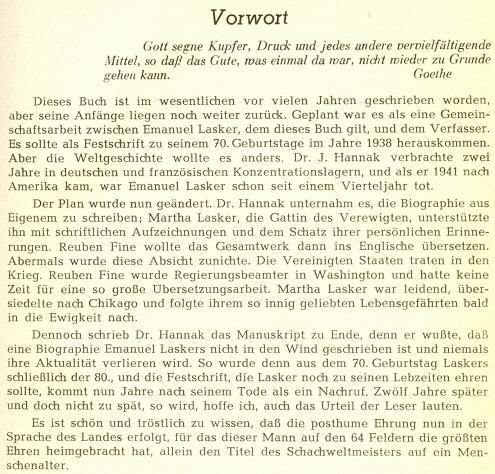
Another complication arises from the following paragraph on page 171 of CHESS, August 1944:
‘New Book on Lasker. Dr Albert Einstein has written a fine introduction to Dr Hannak’s biography of Emanuel Lasker, which Barnie F. Winkelman has translated from the German. The English edition will be published as soon as the paper shortage abates.’
Although 15 years passed before the English book appeared, Einstein’s text was published in English on page 130 of the May 1955 Chess Review. In a footnote Winkelman stated:
‘In 1942, Dr John J. [sic] Hannak had completed his biography of Dr Emanuel Lasker and sent the manuscript to me – in German – with a view to an edition in English. I translated his work into English and, in view of the references to Dr Einstein, suggested that the latter might write an introduction. I wrote to Dr Einstein and received a most courteous reply in which he referred to his old friend and asked for a few days to prepare a fitting foreword to the book. With characteristic care and caution, he also asked for the biography. This I sent to him. Within a week, I received the foreword – in German. I have translated it adequately, I hope. I believe Dr Hannak has embodied this in his biography which was duly published in Vienna [sic] ...’
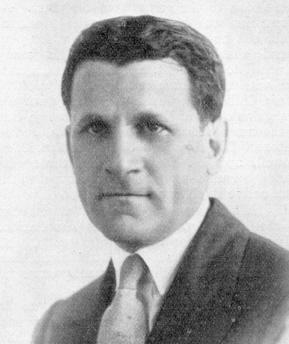
Barnie Frank Winkelman
Winkelman’s translation of the Einstein text differs, of course, from the Fraenkel version in Emanuel Lasker The Life of a Chess Master. On pages 315-316 of that book Fraenkel explained his own involvement by referring to his ‘impatience for an Anglo-American edition of Dr Hannak’s book’; the fact that Winkelman had already undertaken a translation was not mentioned. We recall no reference to Winkelman in Hannak’s book and do not know what became of Winkelman’s complete translation. And why is Einstein’s Geleitwort dated 1952 rather than 1942? Was it a mere case of re-dating to make the text appear more current?
From page 172 of the July-August 1916 American Chess Bulletin:

After giving the game in an article about the Cuban on pages 56-58 of the 5/1987 New in Chess we commented:
‘Either this was the most incompetent game of Capablanca’s life or else, infinitely more probable, E.S. Harvey took the moves down incorrectly. Perhaps an ingenious reader can suggest how they could be amended to make sense.’
Some attempts at reconstruction have been undertaken, but we wonder whether it is possible to find out more about the game in the local press of the time.

What is this?
Morgan Daniels (London) quotes from pages 80 and 82 of Bronowski’s book The Ascent of Man (London, 1973):
‘In a sense, warfare was created by the horse, as a nomad activity. That is what the Huns brought, that is what the Phrygians brought, that is what finally the Mongols brought, and brought to a climax under Genghis Khan much later. In particular, the mobile hordes transformed the organization of battle. They conceived a different strategy of war – a strategy that is like a war game; how warmakers love to play games!
The strategy of the mobile horde depends on manoeuvre, on rapid communication, and on practised tactical moves which can be strung together into different sequences of surprise. The remnants of that remain in the war games that are still played and that come from Asia, such as chess and polo. War strategy is always regarded by those who win as a kind of game.’
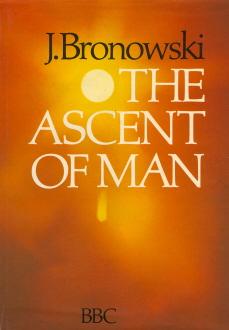
The dedication in Chessgames for Christians by Kenneth R. Adams (2006):

| First column | << previous | Archives [34] | next >> | Current column |
Copyright 2007 Edward Winter. All rights reserved.